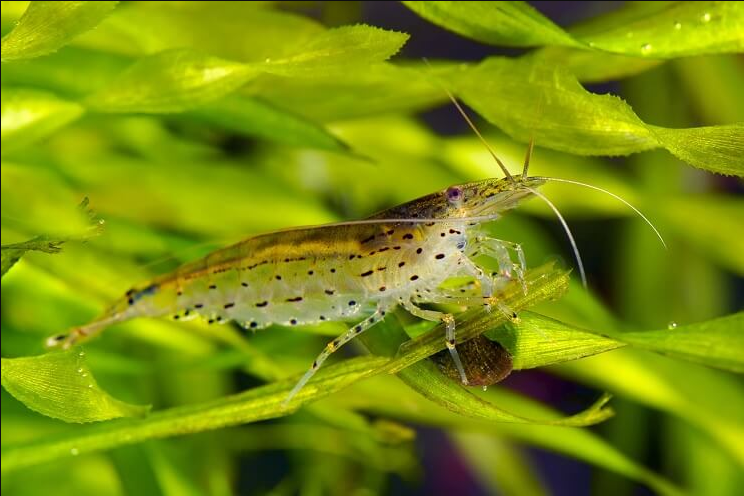
A Complete Amano Shrimp Care and Breeding Guide 2019
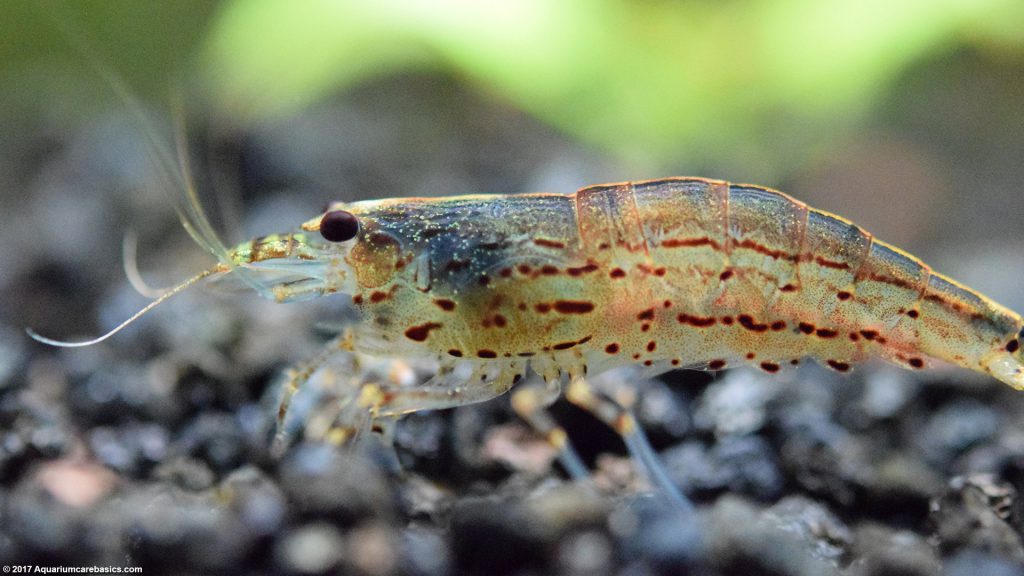
Amano shrimp is like Yellow shrimp and Red Cherry shrimp. These shrimps don’t require a lot of care as you can keep them with you easily.
They feed on the algae present in the aquarium thereby eliminating algae from the aquarium. The breeding of shrimps is difficult sometimes for the beginners who are just new to all this.
Also, Check Out Crystal Black Shrimp Care Guide.
Contents
About Amano Shrimp
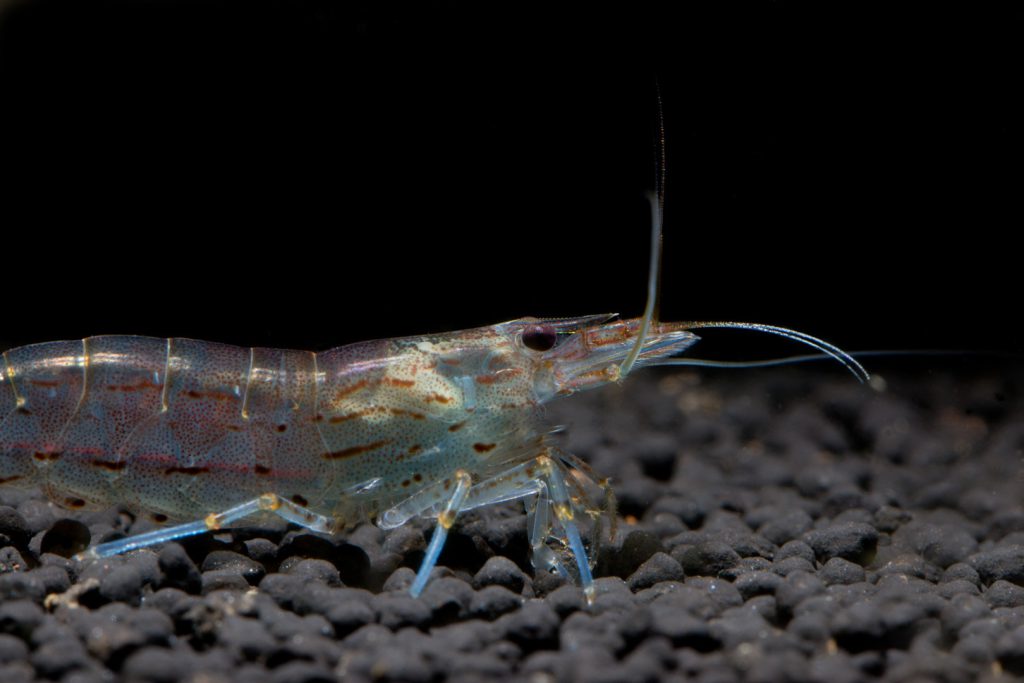
Amano Shrimp is also known as Caridina Japonica, Algae Eating Shrimp or Japonica Shrimp and they belong to the countries like Japan, Korea, and Taiwan.
They can be found near the swamps and marshlands of these areas. It was named after an aquarist named Takashi Amano.
Species name: The main species name is Caridina Japonica.
Family: They belong to the family of Palaemonidae and this needs to be kept in consideration.
Order: Eucarida
Class: Malacostraca.
Distribution: they are distributed in different parts of Japan, Korea, and Taiwan.
If we discuss their physical appearance then we will come to know that their body is transparent grayish in color with a tan stripe that runs the length of the back from the head to the tail and some small broken horizontal lines/dots on their sides.
The grey color is dense on the back of the body and the color can change due to the alterations in food and quality of water.
Amano shrimps have been proved to be very useful in eliminating almost all types of algae, but you cannot think it as a solution against algae proliferation unless or until you have a large group of around one or two per gallon species.
Amano Shrimp Care
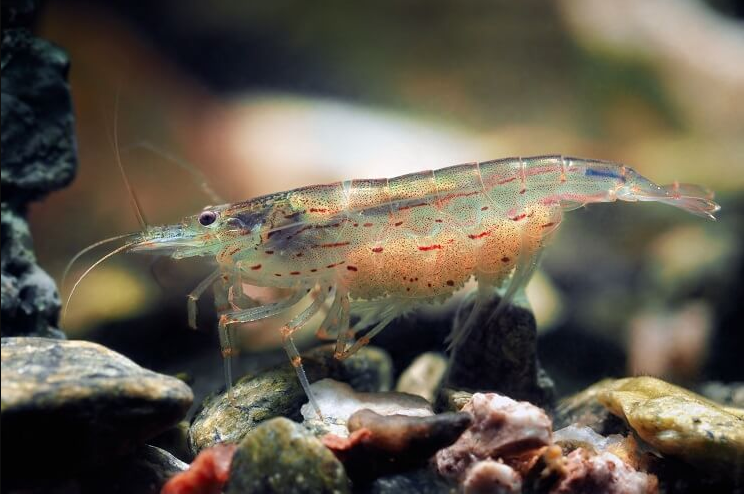
Caring hardiness: You can easily take care of this amano shrimp.
Maximum length: The maximum length of the shrimp is approximately around 2 inches.
Amano Shrimp Lifespan: Their lifespan is around 2-3 years in captivity.
Minimum tank size: The minimum size of the fish tank is 10 gallon.
The pH is 6.0 – 7.6
The DH is of the range 5-15.
The kH is 3-10.
Temperature: 60-80° F
Aggressiveness: Tt is known to be a very peaceful species.
As per the past experiences, they will do well in a properly established aquarium.
Amano shrimps have the capability to tolerate some moderate levels of nitrate being present in the water but the regular water must be of high quality. A neutral or slightly acid pH will be preferred by them and the range of the temperature should be between 60°F and 80°F.
They are known to be excellent cleaners because sometimes they also eat leftover fish food and detritus. Pellet food is considered as the best supplement for them.
How Many Amano Shrimp per Gallon?
A single Amano shrimp can be added per 2 gallons, but it also depends on the number of species someone has in their aquarium tank.
They are known to be very shy and due to this they generally prefer to be housed in large groups in tanks with a large number of other species, some aquatic plants and places where they can hide easily along with some peaceful fishes, which will not try to eat them.
Also, Read Out Betta Fish Care Guide Molly Fish, and Discus Fish.
Preparation of Materials Required for Amano Shrimp Breeding
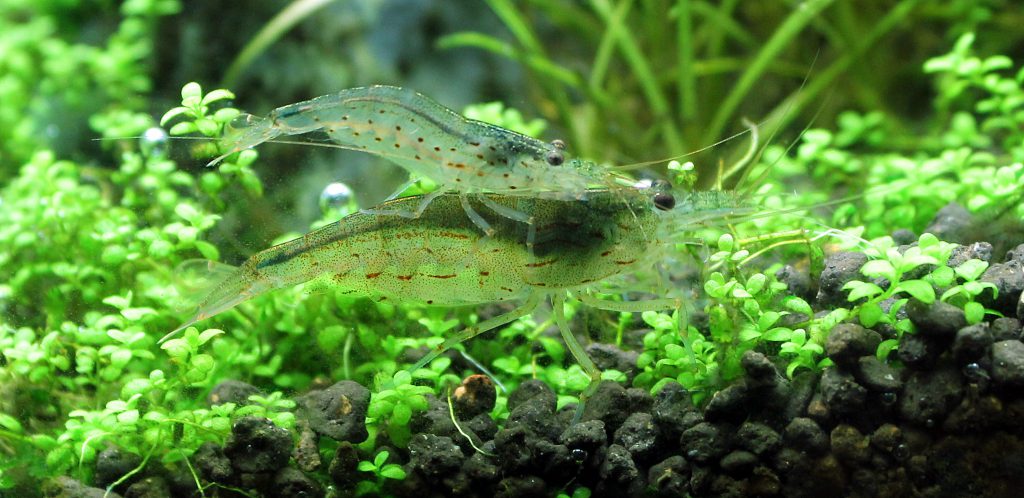
You will not require a lot of material in Amano Shrimp Breeding. Following is the list of the materials that you will be requiring for few Amano shrimps or Algae Eating Shrimp –
5-gallon fish tank is a minimum requirement.
Some jars are also required.
A small aquarium heater for the smaller tank.
A sponge filter will also be required.
Green water culture is an optional requirement.
An aquarium LED light to make the tank look bright.
Aquarium salt is a must.
Some of the other equipment like hydrometer, refractometer or salinity monitor
For creating the background you will need a dark sheet of cardboard.
Step 1: The Hatching Tank Of Amano Shrimp
One of the basic setups is the hatching tank. You need a small tank and some other equipment like a sponge filter, light and a heater which will help in maintaining the temperature of the water.
You can use a dark sheet of cardboard for creating the background and this will help you to easily see the zoes when they hatch. To have hiding places inside the tank you can also add some floating plants.

Step 2: Mating and Distinction in Gender
First of all, move some of the male and female species in the hatching tank for the process of mating. Mating can also take place in the main tank but it will be much easier to work in a small tank as there will be less number of plants.
It is not easy to tell if an Amano Shrimp is a male or a female because it is difficult to distinguish, so what all you can do is to put 5-10 shrimps in the breeding tank and then just hope for the best. At least one of each gender can definitely be present there.
The males are generally around half the size of females whereas the adult males are mainly around 3 cm long and the females are around the length of 5-6 cm. Some of the differences can be spotted by you like the spots on the side of the amano shrimp.
There are round spots on the male body and elongated spots on the female body. The female will release pheromones into the water when she is ready to mate and this will excite the males present in the water and then they will mate with her.
After a couple of days, the female will lay the eggs. Earlier the color of eggs is dark but gradually they become lighter in color. Larvae will hatch after 5 weeks, as till then the female will keep the eggs with herself.
Move all other Amano Shrimps back in the main tank, whenever you see a female carrying eggs onto her abdominal swimmerets.
Step 3: Green Water Culture
You can start the green water culture during the mating period. You can feed the zoes by easily using this way. And this culture can be poured into the tank, which makes the larvae to feed on it.
You can also call the green water by another name called phytoplankton. It is a very simple free-floating algae and it requires very less light and nutrients to grow. Saltwater and freshwater are the two types. Among these, you will need the saltwater types.
If you think that green water cultivation is a difficult task and there are some problems associated with it then you can also try some other varieties of food like Baby Star II and Golden Pearls. You should feed the Amano Shrimp around 5 times a day. This will be sufficient for them.
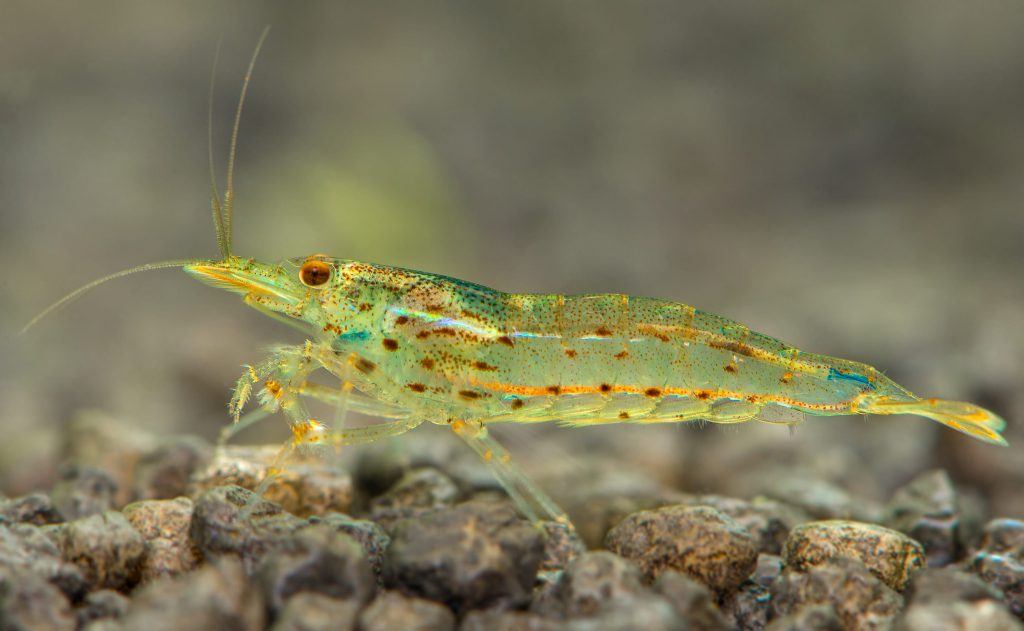
Step 4: Hatching of Amano shrimps
You must make sure that at this point, only the female with eggs should be there in the tank. In order to protect the young larvae from being eaten, we have to keep females with larvae in a separate tank so that they can hatch properly.
That’s why we have moved the other Amano shrimps back to the main tank in which they were previously there. You will notice that the hatching generally occurs during the night time, so you must keep an eye on the process and after hatching the female should be moved back to the main tank as soon as possible.
The size of the floating larvae is around just 1 mm. There will be hundreds of them so it will not be very difficult for you to spot them in the water.
Step 5: Raising the Zoes
You must make sure that the light is switched ON every time. If the light is switched off during the night time, then a large number of larvae can die.
It has been seen that larvae are generally born in freshwater streams. After this, juvenile Amano shrimp will move to a freshwater environment as the adults of this species do not prefer going into the saltwater because they cannot tolerate it. And here we are recreating all this in the breeding tank.
As per the Japanese studies, it has been concluded that there should be the salinity of around 17 part per thousand in the water for the proper growth of larvae. But still, it all depends upon the environmental conditions.
You will have to do some experiments in order to know which condition works better for you. It all depends upon the environment in which you are carrying out this experiment. Prepare seawater of around four times the salinity and let it settle properly for around 24 hours.
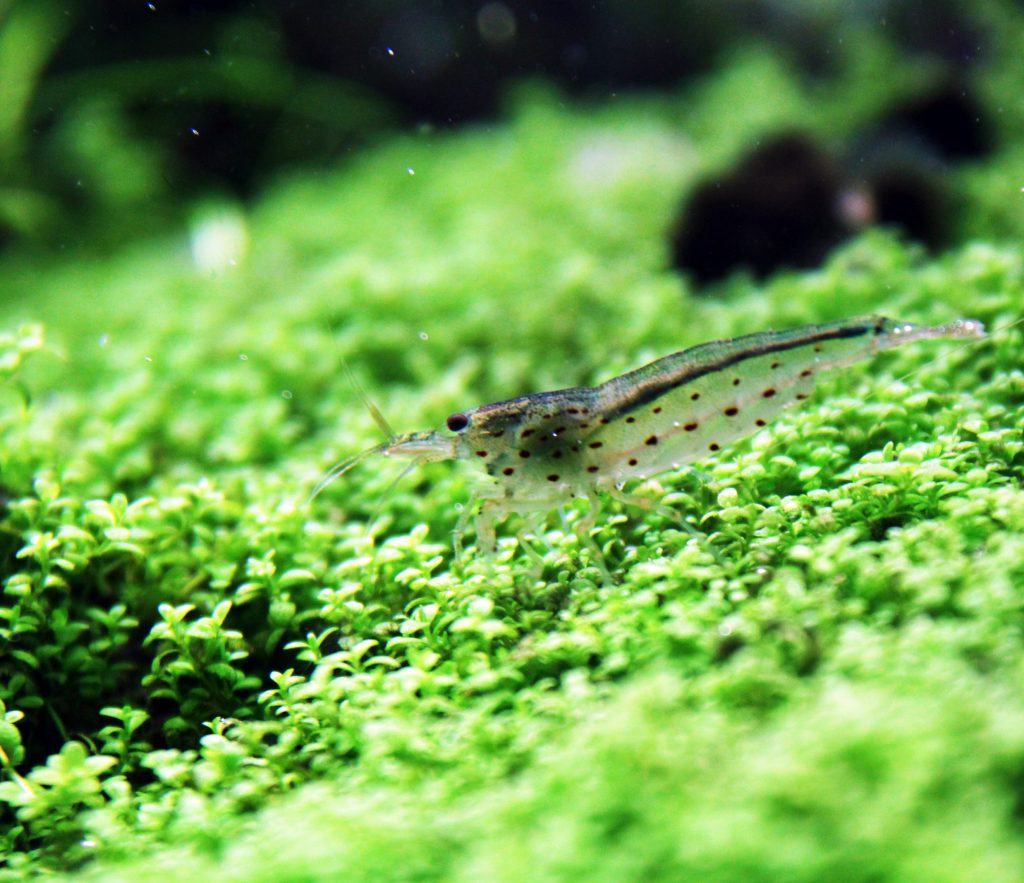
Step 6: Back to Freshwater
There can be some changes taking place while the Amano Shrimps larvae are there in the saltwater. The zoes cannot swim properly but they are capable enough to gather their food.
After metamorphosis, the young juvenile look just like a miniature adult that can walk and swim in a straight line and is no longer able to float in the water. Some changes will take place like the coloration of the body can change.
You will come to know that the zoes do not mutate at the same time. It is because salinity will be a requirement for those who haven’t metamorphosed. And those who have metamorphosed, they can be moved to the freshwater. You can suck them up with an air tube or a pipette and this will be an easy way to catch them.
Putting the Amano shrimp back in the freshwater is very simple. You can simply move the newly metamorphosed juvenile in any jar and then you can replace the water with fresh water. You can put them in the main jar after 3 to 5 days. And then take proper care of them and feed them with proper food so that they grow properly.
About Saltwater

Don’t use common cooking salt. Try to use commercial salt as it will be more beneficial to create the actual environment. All the essential minerals are there in the salt used for the marine aquarium in exactly the same proportion that are there in the seawater and is the only salt that will help you in recreating the similar conditions to the ocean.
1. Some essential equipment required for this is hydrometer, refractometer, etc.
2. You need to let the freshly mixed saltwater sit for around 24 hours before using it and during that period, what you can do is to vent it with an air pump.
3. Always keep an eye on the rate of water evaporation as this may disturb the salt level. The required conditions may change.
According to some people, it is useless to increase salinity. You can simply replace half the freshwater with saltwater or green water which will help you in achieving an exact salinity level. Now everything is there for the growth of larvae: saltwater and green water as food. Now, you can have a seat and watch them grow.
For Further Reading Checkout:
Conclusion
Amano shrimp is like Yellow shrimp and Red Cherry shrimp. These shrimps don’t require a lot of care as you can keep them with you easily. They feed on the algae present in the aquarium thereby eliminating algae from the aquarium.
The Amano Shrimp Breeding is difficult sometimes for the beginners who are just new to all this. They can be found near the swamps and marshlands of these areas. It was named after an aquarist named Takashi Amano.
If we discuss their physical appearance then we will come to know that their body is transparent grayish in color with a tan stripe that runs the length of the back from the head to the tail and some small broken horizontal lines/dots on their sides.
The grey color is dense on the back of the body and the color can change due to the alterations in food and quality of water.
